ATI2 - Preparation and functional evaluation of collagen oligopeptide-rich hydrolysates
Objectives
O3 – Obtain collagen oligopeptides-rich extracted from P. physalis using cold-adapted proteases from psychrophiles bacteria isolated from deep-sea.
O4 – Characterization of the collagen oligopeptides-rich in terms of potential to be used in medic or dermo cosmetic applications.
ATI2
This activity has two main goals. The first goal is to obtain collagen oligopeptides-rich extracted from P. physalis using cold- adapted proteases from psychrophiles bacteria isolated from deep-sea. The second goal is to characterize the obtain collagen oligopeptides-rich in terms of its bioactivity and potential to be used in medic or dermo cosmetic applications.
ATI 2.1 - Production of collagen oligopeptides
Hydrolysed collagen is an advanced version of collagen that has high-value applications because of its high solubility, excellent dispersion and functional activities. The CBA research group from the University of Azores has a collection of psychrophiles bacteria isolated from deep-sea sediments, which can efficiently hydrolyse collagen into peptides. To achieve the first goal, several steps are required: i) optimization of the fermentation conditions for extracellular protease production; ii) hydrolyses of the collagen from P. physalis by the microbial extracellular proteases, and; iii) hydrolyses of the collagen using commercial exogenous enzymes. The profile of produced hydrolysates will be analysed by MALDI-TOF in order to select those with the highest content of low-molecular-weight oligopeptides (4 – 10 aa residues), which are those that are easily absorbed. The hydrolysates will be shared for biological activities with UM (T2.2). This task will be implemented by UAÇ.
ATI 2.2 - Assessment of the peptide's bioactivity
Prior to the assessment of the hydrolysates bioactivity its toxicity will be evaluated using different cells lines, such as fibroblasts (ATCC-CRL2524), primary epidermal keratinocytes (PCS-200-011) and epidermal melanocytes. Lactate dehydrogenase will be used to measure the induce toxicity of the peptides. The ability of this new set of collagen peptides in cellular proliferation will be evaluated by MTT. While proliferation is an important parameter to be addressed, the influence on the cell cycle is of upmost importance. The cell cycle will be analysed by flow cytometry. It is expected that peptides elicit a positive response on skin cells promoting the production of collagen and keratin, therefore the gene expression encoding for it and the production of these proteins will be assessed by RT-PCR and ELISA, respectively. In the case of a medical application for these peptides, like chronic wounds, it is necessary to evaluate the potential of these peptides to reduce the inflammatory stage of wound healing. So, the inflammatory response induced by the peptides will be evaluate upon contact with macrophages pre-activated and non-activated. The production of inflammatory and anti-inflammatory cytokines will be evaluated using ELISA kits. For chronic wounds applications it also important to evaluate the capacity of these peptides to induce cellular migration, for that a wound assay will be performed. On the other hand, if applying to the cosmetic industry, it is necessary to evaluate the antioxidant activity potential, as one of the major cause aging is the production reactive oxygen species. Newer in vitro models are available to have a depth understanding, in terms of layer morphology and cytokine profile, of the influence of different molecules on skin regeneration, like 3D skin model. These models comprise primary fibroblasts, hTERT immortalized MSCs and BJ-5tA (ATCC). The proper biochemical function of the skin is guaranteed by an adequate blood supply and if untypical angiogenesis is detected, it means that molecules have a negative effect on skin regeneration which can leads to fibrosis and scaring. Thereby, the influence of the peptides in angiogenesis will be evaluated using chick chorioallantoic membrane assay. At the end of this task the bioactivity potential of the peptides will be fully characterized. The transcriptional prolife of the epidermal cells will be determined upon contact with the peptides or assemble of peptides with highest bioactivity as described in task T2.3. This task is the responsibility of the UM.
ATI 2.3 - Transcriptional Profiling of Epidermal cells
In this task, a transcriptomic approach will be used to highlight the mode of action of hydrolysates with positive effect immune-modulation, cell differentiation and migration, selected in T2.2. The gene expression analysis can provide relevant information about the altered expression of genes encoding the critical biological processes responsible for inflammation and skin regeneration, such as extracellular matrix organization, collagen fibril organization, and cell adhesion. The level expression of anti-inflammatory interleukins (e.g. IL-1, IL-8), vascular endothelial growth factors and matrix metalloproteinase (e.g. MMP-9 and MMP-13) will be evaluated by RNAseq. This task will produce data valuable for demonstrating compliance with applicable requirements in cosmetics. This task is the responsibility of the UAç.
Participants
- Mesosystem S.A.
- Universidade do Minho
- UAç
Join our mailing list!
Contact Us
More important than what we have to say about ourselves, is what the customers have to say about us.
So let us learn and contact us!
We create possibilites for the connnected world – Mesosystem S.A.
info@mesosystem.com
Phone
Telephone (+351) 227 347 125 (Call to a national fixed network)
Mobile (+351) 924 188 704 (Call to a national mobile network)
Location
Rua de Júlio Dinis 228, 4050-371 Porto, Portugal






